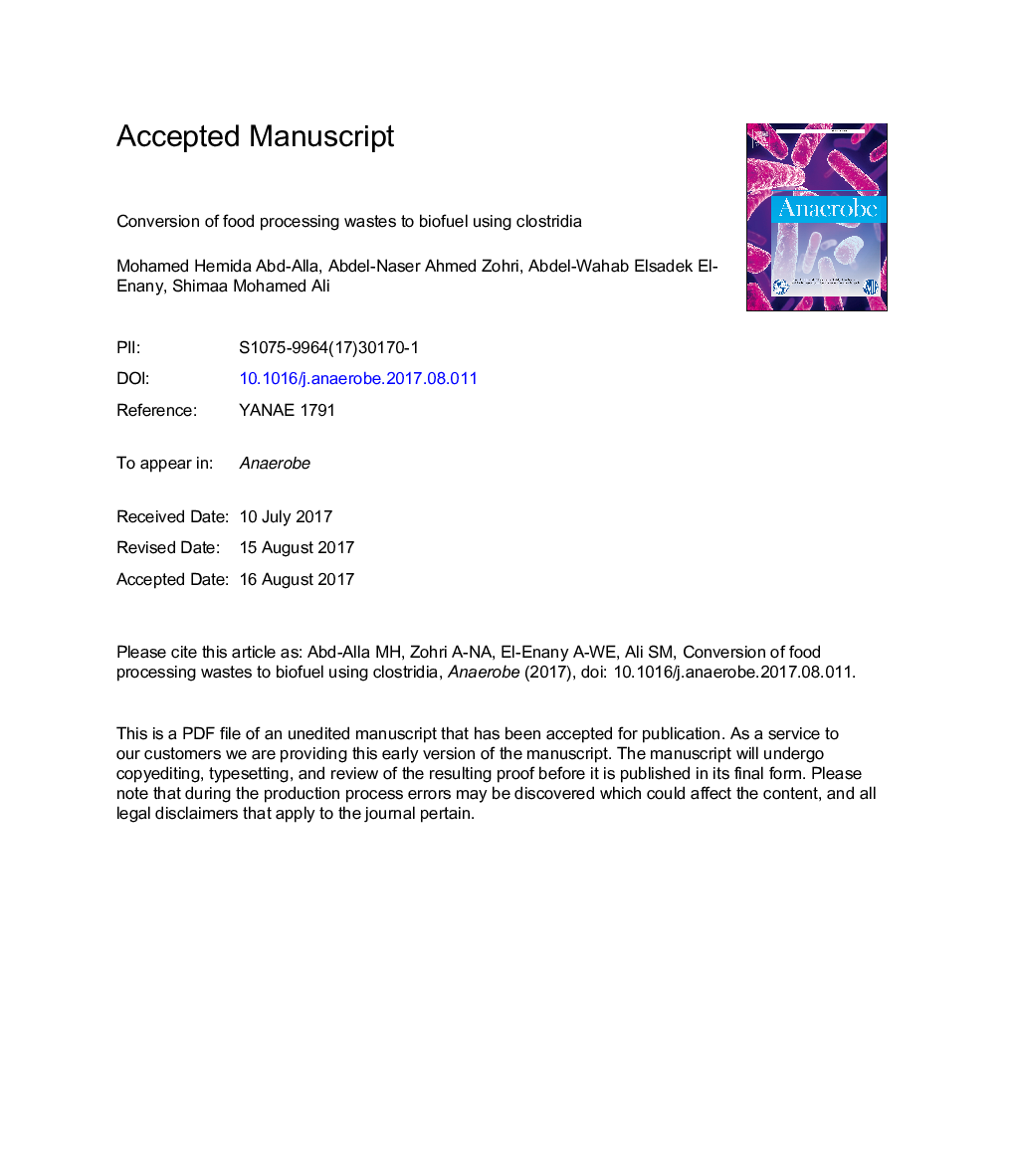| کد مقاله | کد نشریه | سال انتشار | مقاله انگلیسی | نسخه تمام متن |
|---|---|---|---|---|
| 8744689 | 1592816 | 2017 | 35 صفحه PDF | دانلود رایگان |
عنوان انگلیسی مقاله ISI
Conversion of food processing wastes to biofuel using clostridia
ترجمه فارسی عنوان
تبدیل زباله های مواد غذایی به سوخت زیستی با استفاده از کلستریدیوم
دانلود مقاله + سفارش ترجمه
دانلود مقاله ISI انگلیسی
رایگان برای ایرانیان
کلمات کلیدی
موضوعات مرتبط
علوم زیستی و بیوفناوری
ایمنی شناسی و میکروب شناسی
میکروب شناسی
چکیده انگلیسی
This study aims to demonstrate the recycling of food processing wastes as a low cost-effective substrate for acetone - butanol - ethanol (ABE) production. Potato peels and cheese whey were utilized during fermentation with eight local Clostridium strains in addition to the commercial strain, C. acetobutylicum ATCC 824 for ABE and organic acids production. From potato peels, Clostridium beijerinckii ASU10 produced the highest ABE production (17.91 g/l) representing 61.3% butanol (10.98 g/l), 33.6% acetone (6.02 g/l) and 5.1% ethanol (0.91 g/l). While, C. chauvoei ASU12 showed the highest acid production (8.15 g/l) including 5.50 and 2.61 g/l acetic and butyric acids, respectively. Use of cheese whey as fermentable substrate exhibited a substantial increase in ethanol ratio and decrease in butanol ratio compared to those produced from potato peels. Clostridium beijerinckii ASU5 produced the highest ABE concentration (7.13 g/l) representing 50.91% butanol (3.63 g/l), 35.34% acetone (2.52 g/l) and 13.74% ethanol (0.98 g/l). The highest acid production (8.00 g/l) was obtained by C. beijerinckii ASU5 representing 4.89 and 3.11 g/l for acetic and butyric acid, respectively. Supplementation of potato peels with an organic nitrogen source showed NH4NO3 promoted ABE production more than yeast extract. In conclusion, this study introduced an ecofriendly and economical practice for utilization of food processing wastes (renewable substrates as potato peels and cheese whey) for biofuel production using various Clostridium strains.
ناشر
Database: Elsevier - ScienceDirect (ساینس دایرکت)
Journal: Anaerobe - Volume 48, December 2017, Pages 135-143
Journal: Anaerobe - Volume 48, December 2017, Pages 135-143
نویسندگان
Mohamed Hemida Abd-Alla, Abdel-Naser Ahmed Zohri, Abdel-Wahab Elsadek El-Enany, Shimaa Mohamed Ali,
